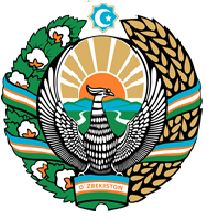Uzbekistan: Government
Key Figures
- Chief of State:
- President Shavkat Mirziyoyev
- Head of Government:
- Prime Minister Abdulla Aripov
Overview
- Government Name:
- Republic of Uzbekistan
- Constitution:
- Adopted: 1992; Serves as the supreme law of Uzbekistan. Creates a separation of powers among a strong presidency (executive), legislature, and a judiciary. Although many features of the constitution are considered to be democratic, often it may be superseded by executive decrees and legislation.
- Government Type:
- Republic under Authoritarian Presidential Rule

Index of Economic Freedom
Country Risk Rating
Government Branches
| Main Powers | Election Process | Election Cycle 1 | |
|---|---|---|---|
| Executive | Dominates all three branches, appoints the prime minister, all members of the cabinet, all members of the judiciary, 16 members of the newly formed Senate, and all provincial executives, and directly controls the National Security Service. |
President is elected by absolute majority vote through a two-round system and the prime minister is appointed by the president. |
7 years |
| Judicial | Decisions of the judiciary generally follow those of the Office of the Procuracy, the state prosecutorial agency, and the president has the power to appoint and remove judges. |
Appointed by Senate. |
10 years |
| Legislative | Parliament has very limited legislative powers under the executive branch. |
Senate is elected by regional governing councils and 16 members are appointed by the president, and the Legislative Chamber members are elected by absolute majority vote in single-member constituencies. |
5 years |
Regional Trade Blocs
No Regional Trade BlocsInternational Organization Participation [2]
Environmental Agreements [3]
Tax Information [2]
- Tax Authority:
- Information not available
- Tax Name:
- Information not available
Sources:
- ElectionGuide http://www.electionguide.org/
- EY, http://www.ey.com
- CIA World Factbook, https://www.cia.gov/the-world-factbook/
- U.S. Bilateral Relations Fact Sheets http://www.state.gov/r/pa/ei/bgn/


